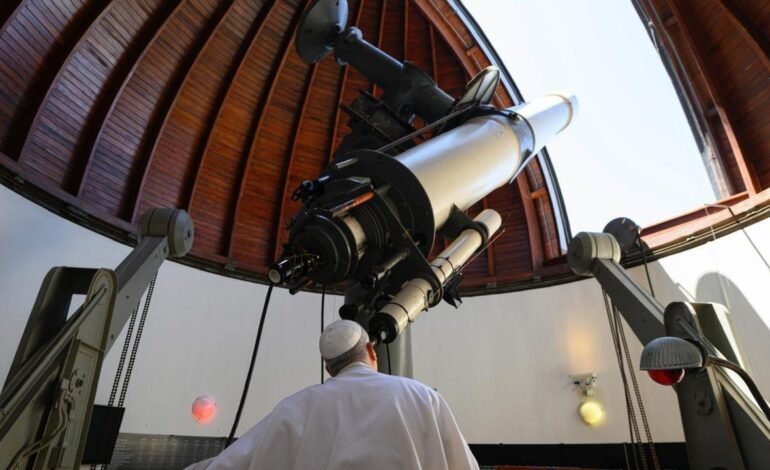Photo taken from: Vatican News
This Sunday, July 20, coinciding with the 56th anniversary of the human landing on the moon, Pope Leo XIV made a historic visit to the Vatican Astronomical Observatory, the famous Specola Vaticana, located in Castel Gandolfo. The tour took place after the Angelus prayer and was guided by astrophysics experts, who accompanied the Pontiff through the domes housing the celestial observation instruments.
The choice of date was no coincidence: it was July 20, 1969, when Neil Armstrong and Buzz Aldrin first walked on the lunar surface, while Michael Collins orbited the Moon aboard the Apollo 11 command module. A feat that millions watched live and which the Pope called “a testament to human ingenuity.”
Call to Buzz Aldrin
That same afternoon, the Pope spoke by telephone with Buzz Aldrin, the only surviving member of the Apollo 11 mission. During the call, they shared reflections on the space exploration and the mystery of Creation, in light of Psalm 8: “What is man that you are mindful of him?” Leo XIV blessed the astronaut, his family and collaborators, remembering that moment as a scientific and spiritual milestone.
Science and faith in harmony
This visit reinforces the message Leo XIV had already expressed last June, when he received young scientists from the Vatican Specola Summer School. He encouraged astronomers to experience the contemplation of the universe with wonder, evoking Saint Augustine and his vision of “the seeds of God scattered in the harmony of the cosmos.”
Twenty-four students from 22 countries participated in this year's edition of the School, focusing their studies on the discoveries of the James Webb Space Telescope.
The Vatican Specola
La Specola, one of the oldest astronomical observatories in the world, was officially founded in 1891 under Pope Leo XIII, although its origins date back to the 16th century. Located near St. Peter's Basilica, it was moved to Castel Gandolfo in the 1930s to avoid light pollution from Rome.
In 1981, the Observatory expanded its international reach with the creation of the Vatican Observatory Research Group (VORG) in Tucson, Arizona, where, in collaboration with the University of Arizona, it has operated the advanced VATT telescope since 1993.
For more stories like this, follow More Latin.
Sources:

